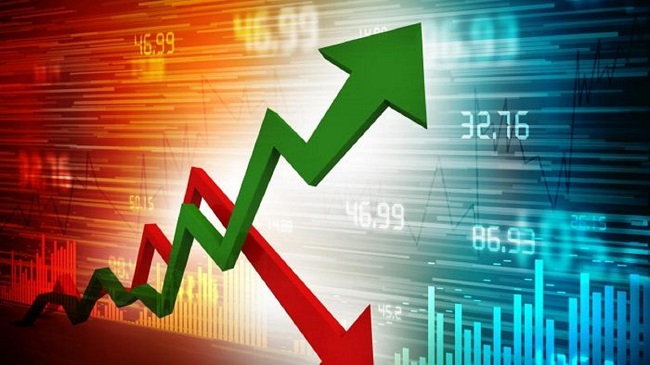Equities trading on the Nigerian Exchange Limited for the third consecutive week continued a downward trend as investors reacted negatively to the latest inflation amid lingering concerns over the potential adverse effects of President Donald Trump’s new tariffs.
Data obtained from the NGX shows that from the first week of April to last week, market capitalisation has lost N648 billion as the market capitalisation which closed at N66.147 trillion on April 4, 2025 closed last Thursday at N65.499 trillion.
This is coming on the heels of remarkable gains recorded in the first quarters of the year. Analysis of the NGX All-Share Index posted a modest gain of 2.66% in the first quarter of 2025, closing at 105,660.64 points.
Notably, the index climbed to an all-time high of 109,172.04 points, fuelled by strong investor sentiment on the back of impressive audited 2024 earnings.
Market capitalisation followed suit, expanding by 5.40% to N66.15 trillion, translating into a N3.38 trillion boost in investors’ wealth.
The market’s performance was underpinned by a robust start in January, which saw a 1.53% gain driven by portfolio rebalancing and earnings optimism.
February maintained the momentum with a 3.18% gain, before sentiment cooled in March as profit-taking activities took hold, bringing the month’s market performance to a retreat of 2.0%.
Market Activity Trading activity remained robust, reflecting renewed investor confidence and strong liquidity.
Total trade volume rose 17% q/q to 40.73 billion units, while total value jumped 41% to N1.14 trillion.
Sectoral Performance: Performance across key indices was mixed, with two sectors posting gains and three recording losses:
The Banking Index advanced 5.61% YTD, driven by sustained rallies in GTCO, WEMABANK, and FIDELITY BANK.
The Consumer Goods Index also posted a healthy 4.64% gain, supported by interest in mid-cap Counters such as CHELLARAM, LIVESTOCK FEEDS, NNFM, and HONYFLOUR.
On the downside, the Oil & Gas Index plunged 9.32% YTD, dragged by selloffs in OANDO, ARADEL, and MRS Oil.
The Industrial Goods Index declined 2.30%, as weakness in BUA Cement and Julius Berger offset gains in Lafarge Africa.
The Insurance Index slid 1.45%, pressured by negative sentiment around SUNU Assurance, Veritas Kapital, and Guinea Insurance.
Lower inflation outlook boosts fixed income market
The fixed income segment witnessed robust activity in the first quarter of 2025, particularly in Federal Government of Nigeria bonds.
Investor sentiment remained upbeat, buoyed by the release of rebased Consumer Price Index data, which revealed a significant 12-percentage-point decline in headline inflation.
This sharp drop in inflation sparked a wave of optimism and triggered a rally in the bond market.
Adding to the momentum was a strategic move by the Debt Management Office, which withdrew the 10-year bond from its February auction—a clear signal of the government’s intent to reduce high cost/long-term debts in anticipation of lower interest rates in the long term.
The move reinforced investor confidence and fuelled strong demand across both the short and long ends of the yield curve.
As a result, the average secondary market yield declined by 104 basis points quarter-on-quarter, settling at 18.71% by the end of Q1 2025, down from 19.75% at the close of December 2024.
Yield compression was observed broadly across the curve, reflecting widespread buy-side interest.
On the supply side, total bond sales during the quarter printed at N1.94 trillion, marking a 128% quarter-on-quarter increase from Q4 2024. This was set against maturities of N562 billion.
Investor appetite was strong, as total subscriptions soared to N2.83 trillion—an impressive 173% rise from the N1.04 trillion recorded in the previous quarter. The DMO offered N1.1 trillion in bonds across Q1, significantly higher than the N420 billion offered in Q4 2024.
The issuance strategy for the quarter featured a mix of reopened and new instruments, spread across three auctions in January, February, and March.

